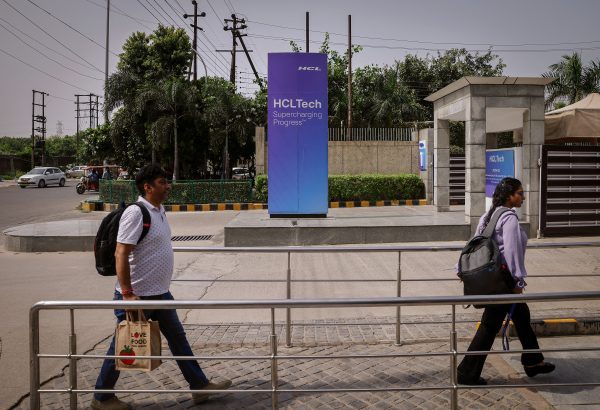Both countries had similar gross national incomes (GNI) per capita in 1980, but in 2022, China’s GNI per capita in terms of purchasing power parities was around Int$20,300, while India’s was Int$8,200. Until its demographic dividend ends, India needs to ensure a consistent annual GDP growth of at least 8 per cent to generate sufficient non-farm jobs for its young population.
India achieved 7.9 per cent growth on average over 2004–14, despite the 2008 global financial crisis. Over this period, the population grew on average 1.4 per cent per annum and GNI per capita grew on average 5.5 per cent per annum. Between 2004–5 and 2011–12, the economy created on average 7.5 million new non-farm jobs every year. This kept youth and total unemployment low and pulled workers out of agriculture at an unprecedented scale — a characteristic of the structural transformation undergone by China and other industrialised countries.
Rapid growth was accompanied by a hastening of structural change in employment. Manufacturing’s share of employment rose from 10.5 to 12.8 per cent of total employment over 2004–11. The share of workers in agriculture had been falling since 1973–74, but the absolute numbers had always increased until 2004–05 after which it began falling.
Like China, most low-skill agricultural workers were absorbed into the construction sector where employment increased from 26 million in 2004 to 51 million in 2012. Public and private investment in infrastructure drove this growth, as well as growth in the services and manufacturing industries.
But this achievement has reversed under Prime Minister Narendra Modi as annual GDP growth fell to 5.7 per cent over 2015–22. The number of new non-farm jobs fell from 7.5 million per annum to just 2.9 million in 2019. Total manufacturing jobs have also fallen since 2015. The contribution of manufacturing to GDP, which was a constant 17 per cent in 1992–2015, fell to 13 per cent before returning to 17 per cent in 2022–23.
The structural factors at play during 2004–14 included corporate overborrowing that became problematic when the post global financial crisis fiscal stimulus was rolled back from 2012. Many corporations stopped repaying loans, especially those from public banks. Banks subsequently reduced lending due to growing non-performing assets.
Slowed GDP growth was exacerbated by poor economic policies. Exports fell from 25 per cent of GDP in 2013 to 22 per cent in 2022 as the real effective exchange rate was allowed to appreciate. Then came Modi’s snap demonetisation in 2016 covering 86 per cent of India’s currency notes. This sent the majority of cash-dependent micro, small and medium enterprises (MSMEs) into a tailspin — many closed, never to recover.
MSMEs, which generate most non-farm jobs, were dealt another blow six months after demonetisation when a national Goods and Services Tax was introduced. Though it subsumed 17 state and indirect taxes, poor planning caused further damage to largely unregistered MSMEs. GDP growth slowed for almost three years and dropped down to 4 per cent before the COVID-19 pandemic broke out.
The government then encouraged public banks to resume lending to the construction sector through non-banking financial companies. Construction was revived temporarily. As slower job growth suppressed consumption, the real estate sector and the new lenders collapsed.
Modi announced a national COVID-19 lockdown in March 2020 when there were only 600 identified cases in India. The world’s strictest lockdown stopped all economic activities, including those of MSMEs. Sixty million city workers returned to agriculture, its share of employment rising from 42 to 46 per cent — a reversal of the earlier structural transformation.
The post-COVID-19 K-shaped recovery meant that the informal sectors shrunk while the formal sector grew. Many new jobs are also in the services sector but require highly skilled workers which, much of the population is not. Realising the demographic dividend in India means creating non-farm jobs for three population groups. India needs to pull millions out of agriculture to counter the reverse migrations of 2020–21.
The second group is better-educated youth, especially girls, since India has achieved a secondary education gross enrolment rate of 80 per cent in 2015. India still has one of the world’s lowest female labour force participation because of constraints on how far they can travel for work as well as a lack of the skills and training required in non-farm jobs. The final target is the openly unemployed. The current government inherited about 10 million openly unemployed people which grew to 38 million by 2022.
India needs at least 10–12 million new jobs each year to absorb these three groups. For India to restore non-farm jobs and resume high GDP growth, it needs a manufacturing strategy akin to China and East Asia that raises the share of labour-intensive manufacturing in output. A slow global economy may not generate export demand, but boosting domestic demand can create jobs.
A renewed focus on MSMEs is also needed to regenerate jobs. The quality of education then needs more attention, especially one that improves non-farm job prospects for girls. Such policies can help sustain GDP growth and the realisation of the demographic dividend.
Santosh Mehrotra is Visiting Professor at the Centre for Development Studies, University of Bath.

